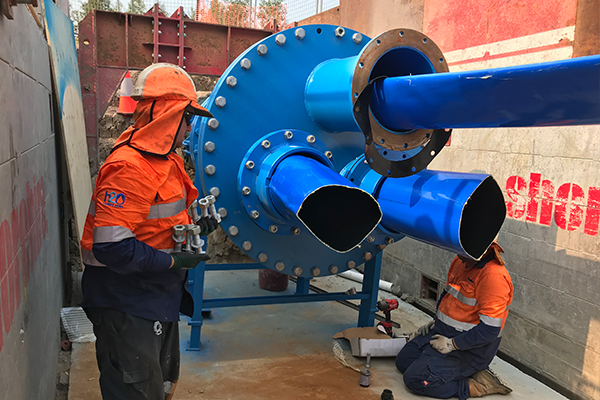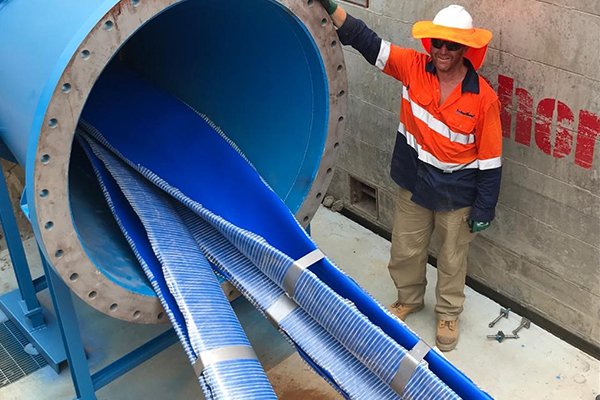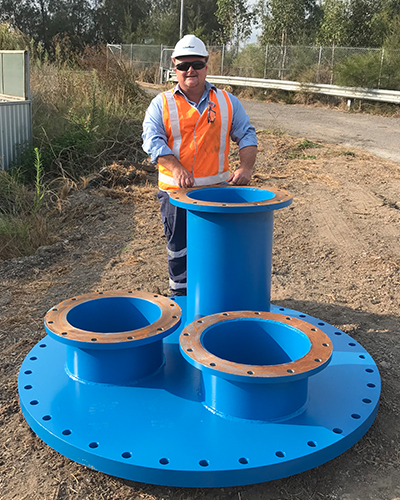When faced with the challenge of repairing a critical DN900 water main, Hunter Water had two options; proceed with a traditional dig and repair method which would significantly disrupt a busy arterial road or find a creative new solution.
The mild steel cement-lined pipeline DN900 PN12 runs underneath a busy street and has two opposing bends of 22.5 degrees. To minimise disruption to traffic, works had to be conducted with only two access points. Given the constraints, a Primus Line solution ticked almost every box. It is strong, can be placed without extensive excavation, and is flexible enough to easily traverse the bends in the pipeline.
The limiting factor for Primus Line was size, with their largest liner having a diameter of just 500mm. This would have resulted in a utilisation rate of only 25% – not nearly enough to adequately service the network. The solution was a 3-in1 liner, the first of its kind in Australia. By installing three smaller DN450 liners, Hunter Water could achieve a utilisation rate ample for the existing network.
Installing three liners at once required custom-built connections, designed by Primus Line and fabricated by Hunter Water. Three reels of liner were then colour coded, stacked, and fed into the host pipe before being inflated and connected to the main network. By challenging the conventional use of Primus Line, Interflow was able to restore an aging pipeline with minimal disruption to commuters and the community.


Hunter Water was faced with the challenge of repairing a critical DN900 water main near Newcastle in New South Wales. The pipe runs under a busy thoroughfare which presented a significant obstacle – traditional dig-and-replace methods would have caused road closures for several weeks, affected the environment and disrupted nearby residents.
The restrictions ruled out the use of any bypass pumping as it wasn’t practical to install and pack To counter these concerns, Hunter Water needed a solution that could be put in place with only two access points and be flexible enough to counter the two 22.5-degree bends in the line.
Interflow crews took the unexpected challenge in their stride and quickly got to work on a practical Primus Line, a flexible Kevlar-reinforced lining solution, was a near-perfect answer to Hunter Water’s problems; it could be installed with minimal excavation and is flexible enough to easily handle the bends in the main.
Primus Line is only manufactured up to a diameter of 500mm, not nearly large enough for the 900mm main that needed rehabilitating. Instead, three 450mm liners were installed, a first-of-its-kind for the Australian water industry. The three liners granted Hunter Water a 60% utilisation rate, which calculations showed would be ample for the network.
Traditional dig-and-repair methods can have a significant impact on the community and the environment. This is precisely what Hunter Water wanted to avoid when renewing a failing section of water main in their network.
By installing an Australian-first triple Primus Line solution, Interflow was able to breathe new life into this piece of infrastructure with minimal impact on traffic, nearby residents, and the ecosystem.


From extensive research and planning, right through to the implementation, this approach resulted in a great outcome for both Hunter Water in the repair of our water main, and for our customers and community in minimising disruption.
Glenn Robinson, Hunter Water